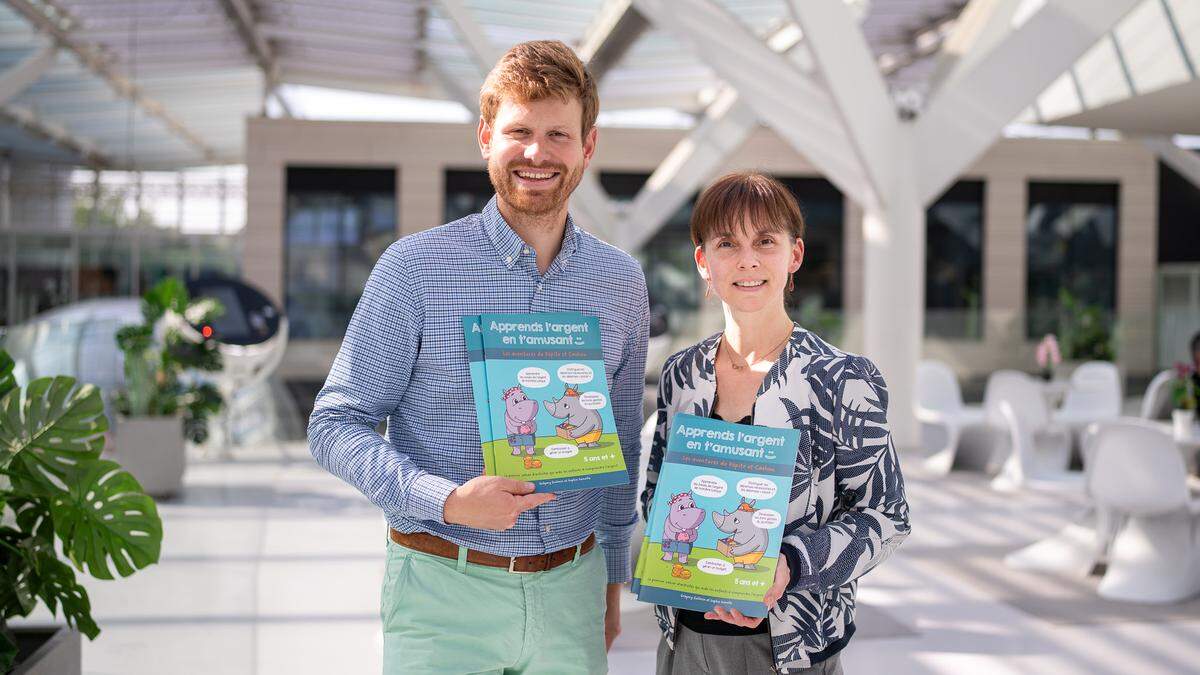In a world where financial transactions are becoming increasingly dematerialized and a card seems to pay for everything, explaining the value of money to youngsters is a growing challenge for many parents. With this in mind, an original and engaging activity book, designed for children aged 5 to 8, aims to demystify the concepts of money and budgeting from an early age.
Titled Apprends l’argent en t’amusant, the book is the fruit of the commitment of Grégory Guilmin, an expert in financial education and a father, and Sophie Somville, who is also passionate about financial education.
Launched on 3 June this year, the activity book has already had quite the success. The idea for this project came from a daily inspiration with his own children. “When my children tell me that it’s the card that pays, I realise the extent to which the notion of money escapes them,” Guilmin said in an interview.
Returning from a family outing, Guilmin immediately set to work. “I wrote down all these different ideas,” he explained. His thinking led him to notice a gap in educational provision for this age group. “There were initiatives that were already being done for 8-, 9-, 10-year-olds, but never for 5-year-olds and above.”
Pépite the hippo and Cashou the rhino act as guides
The booklet, with around 60 pages, is designed to be fun and educational. It features a range of activities, including games, colouring, mazes, challenges and practical exercises. The aim is to tackle concepts that, although fundamental, are often missing from the school curriculum. Using two mascots chosen by the author’s children, Pépite the hippo and Cashou the rhino, young readers are guided through different themes.
The workbook is designed to be highly practical and rooted in children’s everyday lives. For example, one of the first skills children will develop is recognising coins, banknotes and bank cards. “We start with the basics,” Guilmin said. “We’ll show them what a one-euro coin and a two-euro coin look like, and play recognition games. This is a crucial stage in understanding money in its various forms, far from the abstraction of the ‘magic card.’ ”
Another fundamental concept addressed is the distinction between what can be bought and what cannot. “We’re going to make them understand that money can’t buy everything,” he said. “You can’t buy love, friendship or happiness. It’s an important lesson in how to avoid reducing money to a simple means of acquiring material goods, and also to raise awareness of its limits.”
The booklet also encourages children to differentiate between essential needs and pleasure spending. “It’s a concept that even many adults find hard to understand,” Guilmin said with a laugh. “We give them exercises where they have to tick off what’s essential – eating, clothing, shelter – and what’s a pleasure – a toy, a sweet.” This distinction is fundamental to balancing a budget and avoiding impulsive spending.
Also read:Leftlovers, the made in Luxembourg app that fights food waste
The idea is not to turn them into small businessmen, but to show them that money can also be earned through effort and creativity.
Gréogory Guilmin
Author of the workbook
Practical exercises are also proposed to put children in real-life situations. For example, one section is dedicated to managing a small budget, such as organising a birthday party. “We give them a fictitious budget and they have to choose what they’re going to buy for the party: sweets, decorations, cake,” Guilmin said. “It gives them a concrete idea of how the money is divided up and how choices are made.”
As well as simply managing money, the book encourages the adoption of good habits on a daily basis, which are good for both the planet and the wallet. It includes advice on recycling and responsible consumption. Finally, it stimulates creativity by proposing ideas for earning a bit of money as a family, such as selling waffles, taking part in a flea market or even sorting waste. “The idea is not to turn them into small businessmen, but to show them that money can also be earned through effort and creativity,” Guilmin said.
Profit donated to an ASBL
Since its release in early June, more than 950 copies have already been sold. In response to this demand, further developments are already underway. English and Dutch translations of the French booklet are planned for a digital version over the summer, to reach a wider audience. A German translation will also be considered if there is sufficient demand, reflecting the international ambition of the project.
But Guilmin and Somville’s commitment goes far beyond the simple publication of an activity book. The initiative is also deeply committed to solidarity: 100% of the profits generated by sales of the book are donated to the non-profit organisation Je compte donc je suis, co-founded by the two authors.
The mission of this non-profit organisation is to help everyone, children and adults alike, to better understand and manage their money. The association will be offering workshops, conferences and training courses, with a particular focus on vulnerable groups.
Also read:Students create their own ‘Duolingo’ to learn Luxembourgish
Guilmin insists on the fundamental distinction between the ASBL’s activities and his own professional activities in the field of finance: “We’re not talking about the investment stock market, real estate or crypto. We’re not talking about how to become richer. We’re just talking about trying to manage your money in a healthier and more serene way. That’s really the intention of the ASBL.”
The ASBL has big ambitions: the success of the activity book, with a target of 4,000 to 5,000 sales a year, could create “little hives of financial education”, making available the material created by the association as well as workshops for people of all ages.
(This article was first published by Virgule. Machine translated, with editing and adaptation by Lucrezia Reale.)
